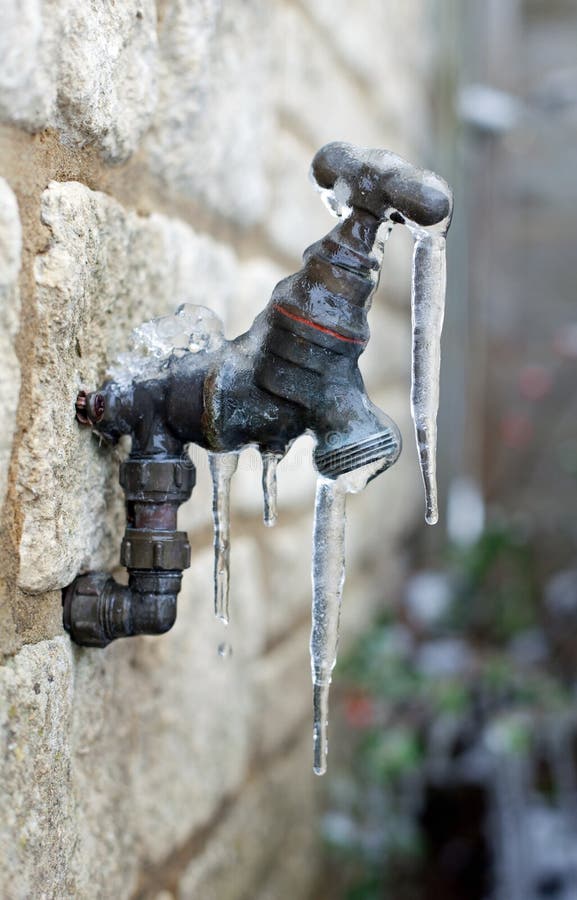Avoid Frozen Plumbing in Cold Weather: Pro Strategies
Avoid Frozen Plumbing in Cold Weather: Pro Strategies
Blog Article
We have discovered the article pertaining to How To Avoid Freezing Pipes below on the web and think it made perfect sense to share it with you on this page.

Cold weather can wreak havoc on your plumbing, particularly by freezing pipelines. Right here's just how to prevent it from happening and what to do if it does.
Intro
As temperatures decline, the danger of frozen pipes rises, potentially leading to pricey repair services and water damages. Comprehending how to avoid frozen pipelines is important for house owners in chilly environments.
Prevention Tips
Protecting prone pipes
Cover pipelines in insulation sleeves or make use of warm tape to safeguard them from freezing temperatures. Concentrate on pipes in unheated or outside areas of the home.
Home heating methods
Keep indoor rooms properly heated, specifically locations with plumbing. Open closet doors to enable warm air to circulate around pipelines under sinks.
Exactly how to identify icy pipes
Try to find decreased water circulation from faucets, uncommon odors or sounds from pipes, and noticeable frost on subjected pipes.
Long-Term Solutions
Structural adjustments
Think about rerouting pipelines away from outside walls or unheated areas. Include added insulation to attics, cellars, and crawl spaces.
Upgrading insulation
Purchase premium insulation for pipelines, attic rooms, and walls. Correct insulation helps keep regular temperatures and decreases the threat of frozen pipelines.
Securing Outside Plumbing
Garden pipes and outside taps
Separate and drain pipes garden hoses prior to winter season. Mount frost-proof spigots or cover outside taps with protected caps.
Recognizing Icy Pipelines
What causes pipes to freeze?
Pipes freeze when exposed to temperatures listed below 32 ° F (0 ° C) for extended durations. As water inside the pipelines ices up, it expands, putting pressure on the pipeline wall surfaces and possibly creating them to burst.
Risks and damages
Frozen pipes can result in water disruptions, home damage, and costly repair services. Burst pipes can flood homes and cause comprehensive structural damages.
Indicators of Frozen Water Lines
Determining frozen pipelines early can avoid them from bursting.
What to Do If Your Pipelines Freeze
Immediate actions to take
If you suspect frozen pipelines, maintain faucets available to ease stress as the ice melts. Use a hairdryer or towels taken in warm water to thaw pipes gradually.
Conclusion
Stopping icy pipelines requires proactive steps and fast actions. By understanding the causes, signs, and safety nets, property owners can protect their pipes throughout winter.
6 Proven Ways to Prevent Frozen Pipes and Protect Your Home
Disconnect and Drain Garden Hoses
Before winter arrives, start by disconnecting your garden hoses and draining any remaining water. Close the shut-off valves that supply outdoor hose bibs and leave the outdoor faucet open to allow any residual water to drain. For extra protection, consider using faucet covers throughout the colder months. It’s also important to drain water from any sprinkler supply lines following the manufacturer’s directions.
Insulate Exposed Pipes
Insulating your pipes is an effective way to prevent freezing. Pipe insulation is readily available at home improvement stores and is relatively inexpensive. Pay close attention to pipes in unheated areas such as the attic, basement, crawl spaces, or garage. Apply foam insulation generously to create a buffer against the cold. You can also wrap your pipes in heat tape or thermostat-controlled heat cables for added warmth.
Seal Air Leaks
Inspect your home for any cracks or openings that could let in cold air. Seal any holes around the piping in interior or exterior walls, as well as the sill plates where your home rests on its foundation. Additionally, make sure to keep your garage door closed unless you’re entering or exiting. Leaving it open creates a significant air leak that can lead to frozen pipes.
Allow Warm Air Circulation
During cold snaps, it’s essential to allow warm air to circulate evenly throughout your home. Leave interior doors ajar to promote better airflow. Open kitchen and bathroom cabinets to help distribute heat consistently around the rooms. If you have small children or pets, be sure to remove any household chemicals or potentially harmful cleaners from open cabinets for safety.
Let Faucets Drip
A small trickle of water can make a big difference in preventing ice formation inside your pipes. When temperatures drop significantly, start a drip of water from all faucets served by exposed pipes. This continuous flow helps prevent the water from freezing. Additionally, running a few faucets slightly can relieve pressure inside the pipes, reducing the chances of a rupture if the water inside does freeze.
https://choateshvac.com/6-proven-ways-to-prevent-frozen-pipes-and-protect-your-home/

Do you enjoy reading up on 6 Ways to Prevent Frozen Pipes? Place a short review down the page. We would be pleased to find out your suggestions about this entry. We are looking forward that you visit us again in the near future. If you please pause to share this blog entry if you appreciated it. Thanks so much for going through it.
Additional Resources Report this page